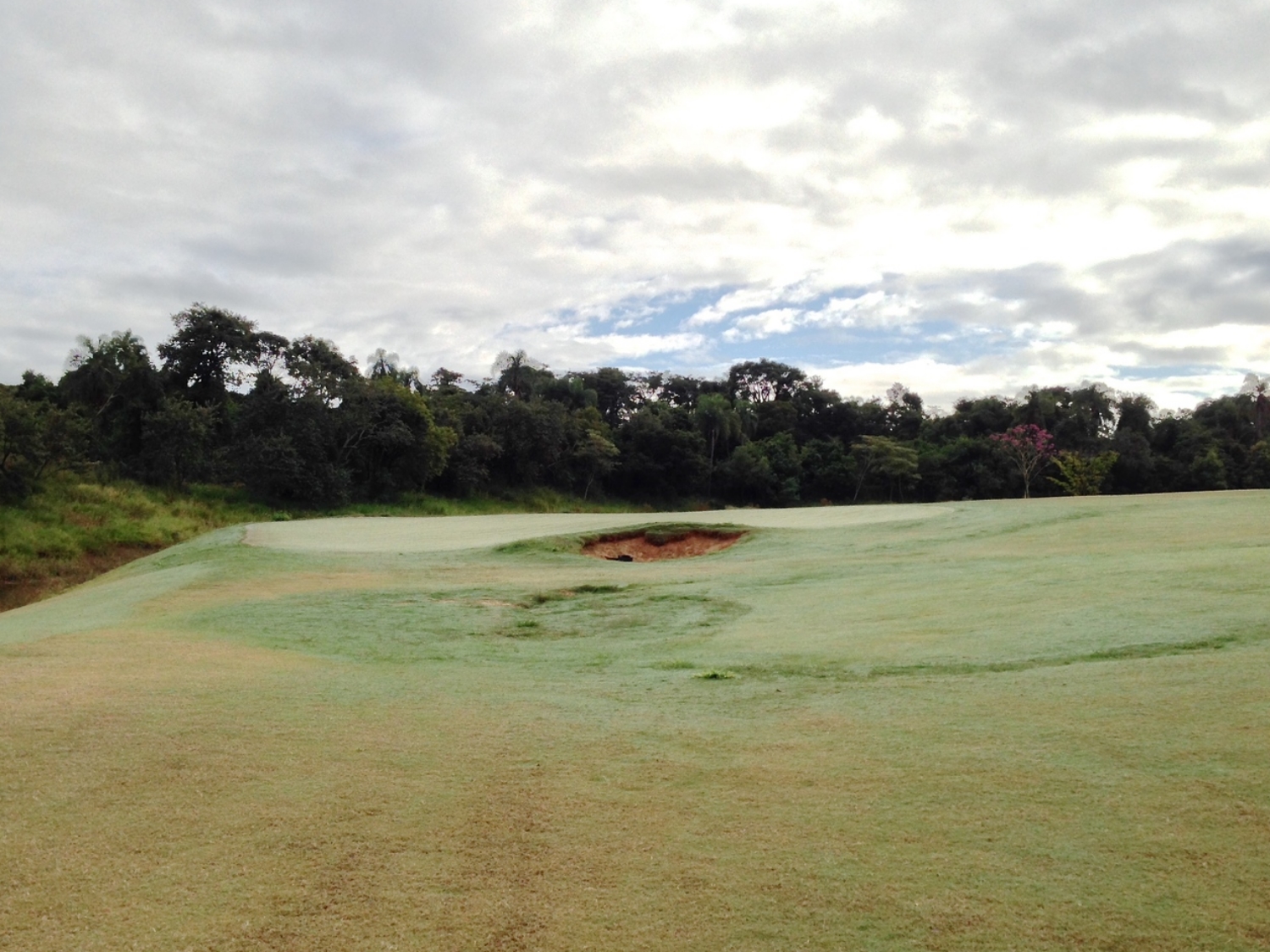The mountains in all directions are incredibly more dramatic in person
Earlier last month following my duties at Fazenda Boa Vista, I had the opportunity to visit Rio de Janeiro and the Olympic Golf Course for my last weekend in Brazil. The guys from Progolf Brasil, who were just beginning work as the contractor for the Olympic course, had been especially insistent upon making a trip to Rio both for the course but also to see "the real Brasil." Sorrocaba might actually be a closer representation of the "real Brasil," but I knew what they meant. Upon flying into and landing in the city, I could see immediately I was no longer in Sao Paolo State. Bright blue water, golden sand beaches, and vivid green mountains* thrusting themselves up from the earth all made for a setting not quite like any I had ever seen. Lake Michigan has its Carribean like water and golden sand, but there are no mountains towering above. Guilin in China and Thailand have their famous odd rock formations thrusting into the sky, but there is no sand or blue water (or blue skies for that matter) to be found in their more color-muted settings. No, this was different, and to the eyes of outsiders around the world, this was indeed the Real Brazil.
*There is something concrete to the inspiration for the unique colors selected for Brasil's instantly recognizable national flag--blue water, golden beaches, and green countryside.
I had the great fortune to stay with the 3 lads from Olympic course architect Gil Hanse's on-site team--Melbourne native Ben Hillard, Brora native Neil Cameron, and North Berwick native Ben Warren. The collective hometown golf locales of these three gentlemen could rival that of probably just about any gathering of 3 people. I wasn't jealous at all or anything.
We grabbed a quick lunch that Saturday then headed out to the site for what was their afternoon of work and my chance at a tour. Seeing this site was going to be particularly interesting for me after having gotten to know it through helping plan the proposal from Tom Doak and Renaissance Golf, who obviously came up just short in the selection.
Warm, sunny, and sandy, I ditched the pants and boots that were required back in the Fazenda and immediately threw on my preferred type of site shoes--a pair of Rainbow flip flops, which to my delight were also being sported by Ben Warren. I'm not alone in my fashion choices after all. To my appreciation, Ben Hillard decided to take the afternoon to check on things himself and play tour guide, taking me along 1 through 18 and engaging in great talk both about the course and the industry in general. Benny Warren joined in around the middle of the front 9, and we continued, pausing to talk about hole features, shot values, and the adventures or pains of constructing them. We planned a quick go around in about 2 hours, but we ended up using every last bit of daylight before getting to 18 and finding it to be time for a few cold ones and some dinner. They continued to be great hosts that evening and the following day, introducing me to my favorite food in Brazil (prawn pastels) and taking me to a mountain top restaurant overlooking the beaches and countryside. Between the course tour, the Sunday drive, the endless golf discussion, and the general camaraderie, it was one of the more fun weekends I've had in quite awhile.
I won't say too much about the course itself, for it is not really my position to do so. The project is under tight wraps and understandably so given the stature and the amount of scrutiny it is subject to. I will say though that barring any major interference or negative events, Gil and team are going to have come up with something special. The routing is great, and there are a lot of cool concepts in play. The site is also way better than I imagined. All I had known of it was that it was sandy and flat with one corner of moving terrain. Truth is, there is a lot of micro stuff going on, the surrounding mountains are unbelievable cool and dramatic, and the vegetative texture is quite amazing, especially for Brazil, or any tropical locale for that matter. They are utilizing that texture and those contours to the fullest, and the result is going to be a very good and very natural look. Despite the lame format, I am really looking forward to seeing the 2016 event to see how this course turned out and how it is received. It should be another move for golf going in the right direction.


















